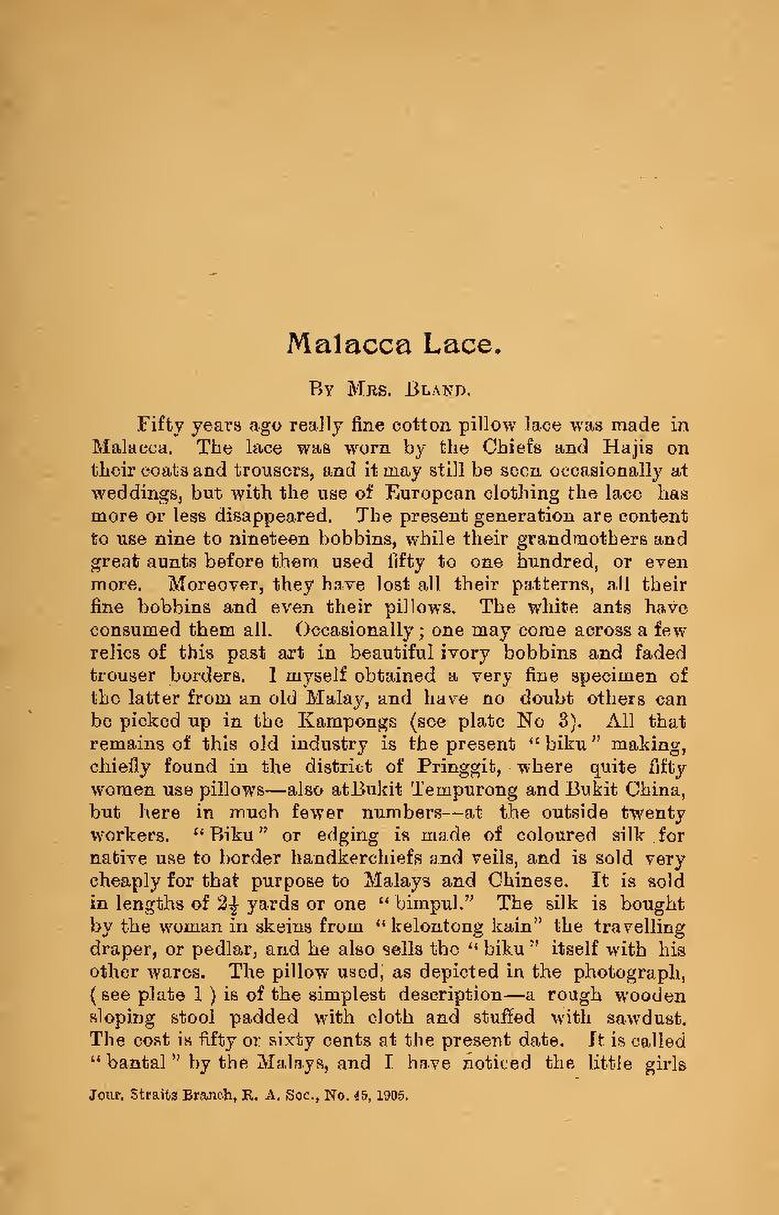Malacca Lace.
By Mrs. Bland.
Fifty years ago really fine cotton pillow lace was made in Malacca. The lace was worn by the Chiefs and Hajis on their coats and trousers, and it may still be seen occasionally at weddings, but with the use of European clothing the lace has more or less disappeared. The present generation are content to use nine to nineteen bobbins, while their grandmothers and great aunts before them used fifty to one hundred, or even more. Moreover, they have lost all their patterns, all their fine bobbins and even their pillows. The white ants have consumed them all. Occasionally; one may come across a few relics of this past art in beautiful ivory bobbins and faded trouser borders. I myself obtained a very fine specimen of the latter from an old Malay, and have no doubt others can be picked up in the Kampongs (see plate No 3). All that remains of this old industry is the present "biku" making, chiefly found in the district of Pringgit, where quite fifty women use pillows—also at Bukit Tempurong and Bukit China, but here in much fewer numbers—at the outside twenty workers. "Biku" or edging is made of coloured silk for native use to border handkerchiefs and veils, and is sold very cheaply for that purpose to Malays and Chinese. It is sold in lengths of 2 1/2 yards or one "bimpul." The silk is bought. by the woman in skeins from "kelontong kain" the travelling draper, or pedlar, and he also sells the "biku" itself with his other wares. The pillow used, as depicted in the photograph, (see plate 1) is of the simplest description—a rough wooden sloping stool padded with cloth and stuffed with sawdust. The cost is fifty or sixty cents at the present date. It is called "bantal" by the Malays, and I have noticed the little girls
